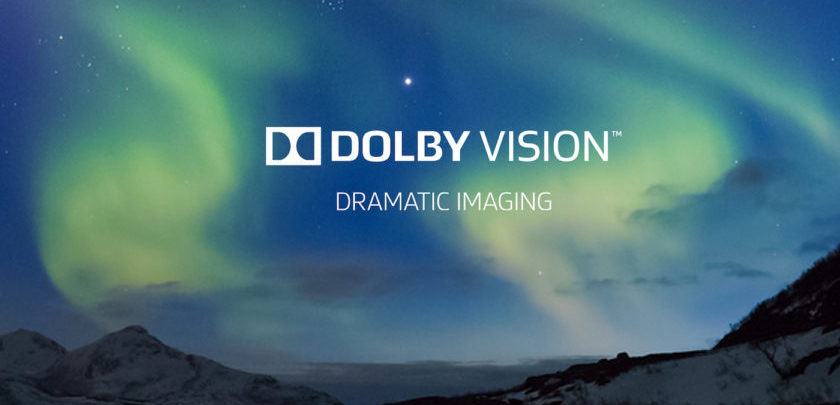M+E Daily

Dolby CEO: Company Saw Atmos, Vision Streaming Strength in Fiscal Q2
Story Highlights
Despite challenges to the industry presented by the COVID-19 pandemic, Dolby continued to make progress with the adoption of its Dolby Atmos immersive sound technology and Dolby Vision High Dynamic Range (HDR) format in the second quarter (ended March 27), according to company CEO and president Kevin Yeaman.
“One area that has seen growth during the current environment has been the increased consumption of streaming content” from partners including Netflix, Apple, Amazon and Disney, “all of whom are streaming content in Dolby Vision and Dolby Atmos,” he said May 4 on an earnings call.
“We continue to see broader adoption across an increasing number of partners,” he told analysts, noting the latest examples included Showtime and CBS, who “both started to support Dolby Vision on their streaming services.”
Meanwhile, “at CES, which admittedly seems like a very long time ago, many of our OEM partners announced new TVs and PCs supporting Dolby Vision and Dolby Atoms and we have seen a number of those products launched this quarter and those remain on track to come to market later this year,” he said.
The company continues to “enable Dolby Vision and Dolby Atoms experiences further within TV lineups,” he noted, adding: “We remain on track towards significantly increasing the adoption of Dolby Vision and Dolby Atmos across a larger percentage of 4K TVs this year.”
In mobile, Samsung, Oppo and Sony all launched their latest devices for 2020 with support for Dolby Atmos, while Apple included support for Dolby Vision in its recently launched iPhone SE, he pointed out.
In addition, “we continue to see opportunities for more adoption of Dolby Vision and Dolby Atmos within PCs, with gaming content becoming a growing use case,” he said. For example, this quarter, Activision launched the videogame “Call of Duty: Warzone” in Dolby Atmos, “reaching over 50 million gamers within its first month,” he told analysts. Also, Lenovo recently launched its latest lineup of gaming PCs that fully support the Dolby experience, he said.
Dolby is also continuing to see growing interest for Atmos in music, he noted, pointing as examples to A.R. Rahman becoming the first music artist from India to support Dolby Atmos for music and rock band Pearl Jam releasing its latest album, “Gigaton,” in Dolby Atmos. The company has also “enabled a special visual album experience” in Dolby Vision and Dolby Atmos on Apple TV, Yeaman said.
Dolby reported Q2 revenue grew to $351.8 million from $338.3 million, while profit increased to $88.5 million (86 cents a share) from $73.4 million (70 cents a share) despite its Dolby Cinema business being hurt by the global shutdown of movie theaters featuring its technology. Licensing revenue jumped to $328.9 million from $310.3 million.
“We are well positioned to navigate these challenging times,” according to Yeaman, who noted about 95% of Dolby’s workforce is now working from home. “We have in place a business continuity plan and while nobody ever wants to have to use it, it has served us well,” he said, explaining that, “in terms of how it has affected our work, we are able to continue to conduct our business from product releases, integrations and certifications of Dolby technologies.”
The company “can’t fully replicate the ability to wow our customers with live demos or engage in certain aspects of our research and development that rely on our labs,” he conceded. But he pointed out: “One of our responses has been to increase our focus on our ability to conduct online demos and training for our customers and partners. This important infrastructure team has not missed a beat, continuing to stay on schedule, while working even harder to meet the needs of our work-from-home employees.”
The pandemic has “caused a lot of stress and uncertainty in the economy” and that “affected the level of growth we were able to achieve in Q2,” Dolby CFO Lewis Chew said on the call.
Broadcast, the market category Dolby uses for licensing revenue from TVs and set-top boxes, represented about 39% of the company’s total licensing in the quarter, he said, noting broadcast revenue grew about 5% from a year ago, “driven by higher recoveries and also higher adoption of Dolby Vision and Dolby Atmos.”
Mobile phones and tablets represented about 23% of total licensing in the quarter and revenue grew about 13% over last year, “driven primarily by growth in our patent programs,” he said.
Consumer electronics – including soundbars, smart speakers, digital media adapters including Apple TV and Fire TV-type devices, audio/video receivers and Blu-ray players – accounted for about 15% of total licensing in the quarter, he noted. CE licensing increased about 10%, “driven by higher volume for more adoption,” he said.
PCs accounted for about 14% of total licensing in the quarter, with revenue up about 11% from last year, he said. Other markets licensing – which includes revenue from automotive, Dolby Cinema box office revenue sharing, videogame consoles and Dolby Voice licensing — represented about 9% of total licensing in the quarter, he noted. That category was down about 16% from a year ago “as we saw lower volume and lower recoveries in automotive, lower revenues from Dolby Cinema, all of which was due to the pandemic despite the fact that we do have more Dolby Cinema screens now than we did a year ago, and lower revenues from gaming due to the lifecycle in the consoles,” he said.









